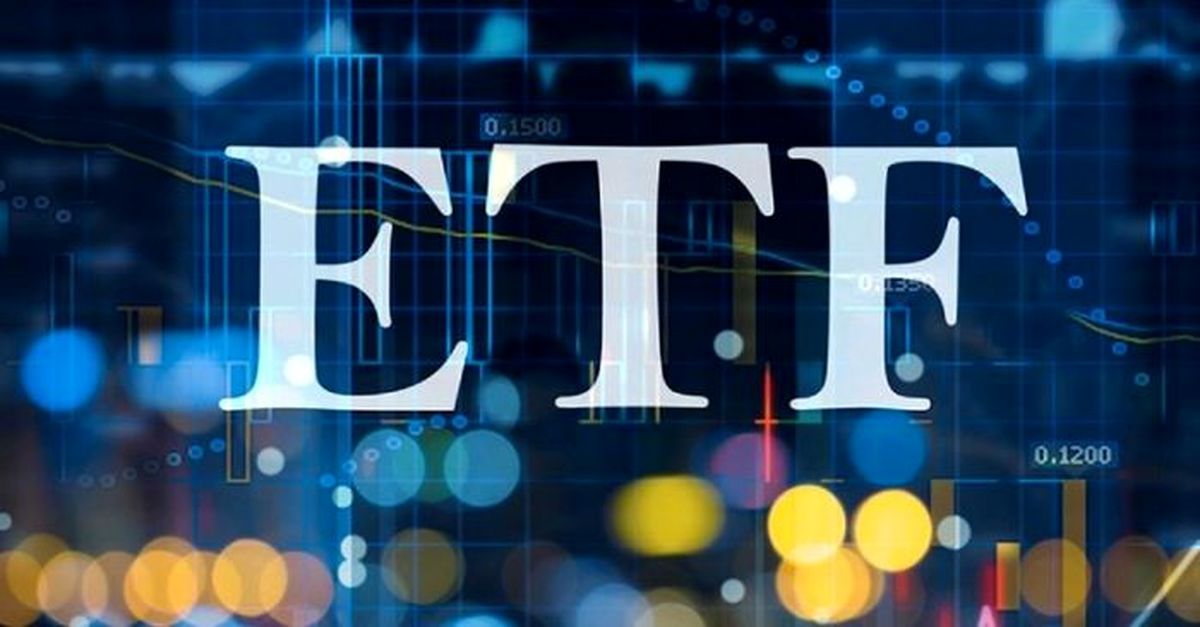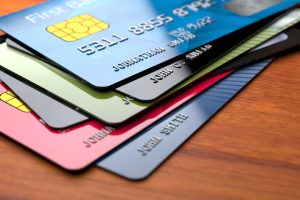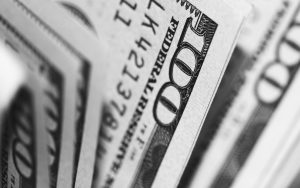What is an exchange-traded fund (ETF)?

exchange traded fund (ETF)
What is an exchange-traded fund (ETF)?
Exchange-traded funds (ETFs) are amongst investment funds that combine some features of mutual funds with some features of stocks. In fact, ETFs are similar to mutual funds in many aspects, but differ from mutual funds in that they can be traded during the day on the stock market similar to typical shares of public companies. For this, ETFs exhibit two attractive features, i.e., they have a diverse basket similar to mutual funds and can be traded similar to stocks.
ETFs were first introduced to the market in the 1990s and now have attracted enormous attention. Today, ETFs are one of the most popular products for investment, especially for micro investors, as ETFs (similar to mutual funds) initially allow investors to buy a diverse basket of securities collectively, and yet give the investor the flexibility to trade daily on the stock market.
In general, an ETF on the stock market itself compromises a set of securities (e.g., stocks), which are often follow a certain capital market index. In addition, ETFs can invest in a distinct sector of the industry or have their own strategies. For example, an ETF can follow the stock index of the technology sector. Another ETF can pursue the stock index of a group of oil companies and the other can follow a wide group of stocks of multiple corporations in various fields. There are currently nearly 500 distinct ETFs in Canada that are offered by 20 sponsors offering a wide range of interests. The corresponding total number of ETFs in the United States is over 2000. The total capital of ETF funds in Canada is currently estimated at over $200 billion.
Generally, to create and sell an ETF, the ETF supplier or sponsor first creates an equity fund considering pre-defined criteria. After creating a basket comprising all kinds of stocks, the supplier firm assigns a symbol for the entire fund on the stock market. It then sells the fund shares to investors under the elected symbol. Thereby, stock market investors buy a portion of the entire ETF fund, not single stocks in it. From the investor’s perspective, this is similar to buying the shares of a single firm on the stock market, but the shares bought here are comprised of tens of shares from various firms, and consequently, its price is influenced by the performance of all those companies.
ETF creation and presentation
- An ETF provider considers a basket of assets, including stocks, bonds, commodities, or currencies, and creates a basket consisting of them with a single symbol, similar to the symbol of a listed companies.
- Investors can buy a portion of that basket, similar to shares of a firm.
- ETF buyers and sellers trade ETF similar to stock during the day.
The main advantage of ETFs is the diversification of your investment basket at a low cost. Suppose you are interested in bank stocks and believe that they will make a considerable profit in the following years, but simultaneously, you have no time or information to trade-off between multiple banks to find the best bank. Or even if you have sufficient time and knowledge, you may still prefer to distribute your purchases among several great companies to, ideally, avoid putting all your eggs in one basket. According to their mandate and guidelines, ETFs allow you to enjoy similar diversification advantages without buying large numbers of stocks seperately.
Example: BMO EQUAL WEIGHT BANKS ETF is an exchange traded fund in the Canadian Stock Market. It was created by the Bank of Montreal and is accessible to the public under the symbol ZEB for purchase on the Canadian Stock Market. According to a predetermined criterion, this found compromises of six big Canadian banks in equal proportions, approximately each with 16.5% weighting in fund. In this system, the money enters into the fund is split into six parts, and each part is spent on buying one share of the shares of one of the six big Canadian banks. In fact, buying this share means buying the shares of six big Canadian banks in equal proportions.
As you might have known, instead of buying the shares of ZEB ETF, you can independently copy the practice of this fund and split your money into six and then with each part of your money, you can buy the shares of one of those six banks. While this is indeed a possibility, by doing so you may face some issues; Issue and obstacles that have led to the attractiveness and popularity of ETFs. In the following, I attempt to introduce these potential problems and introduce the solutions an ETFs has to offer:
Right now the approximate stock prices of six big Canadian banks are as follows:
|
RBC Bank |
Price of each share: $105 ($10500 for 100 shares) |
|
CIBC Bank |
Price of each share: $109 ($10900 for 100 shares) |
|
BMO Bank |
Price of each share: $94 ($9400 for 100 shares) |
|
TD Bank |
Price of each share: $69 ($6900 for 100 shares) |
|
SCOTIA Bank |
Price of each share: $63 ($6300 for 100 shares) |
|
NATIONAL Bank |
Price of each share: $72 ($7200 for 100 shares) |
The price of each share of ETF (ZEB) is equal to $28 ($2800 for 100 shares), meaning that if you attempt to directly buy a diversified collection of shares of six big Canadian banks, then you must buy at least 100 shares of each of the above shares, which requires more than $52,000!
On the contrarily, the price of each share of ETF (ZEB) with an equal percentage of each of these banks is only $28 and you can buy 100 shares for only $2800. That is you need $52,000 to diversify and buy bank shares separately, but you can do the same diversification for only $2,800 using appropriate ETF. When you don’t have enough money to buy all shares separately, rational way is to buy an ETF instead of putting all the eggs in a basket and buying a single bank share. This avoids tying the fate of your entire capital to the fate of a single bank, no matter how reputable and credible it is.
Note: It is possible to buy less than 100 units of each share, but it is 100 share is considered a standard lot for purchases, and buying less than 100 shares is not recommended for reasons beyond the scope of this writing. Another point to consider is that there is a significant difference between $2,800 and $52,000 for the above example with only six big Canadian banks. Now, suppose you wish to expand your diversification and, for example, prefer to invest in the overall outcome of the stock market instead of single shares and single industries. Could you buy 500 shares separately? Maybe you can, nut isn’t it more rational to hit 500 diversification target with a single shoot and buy an ETF having 500 shares of the stock market? To buy, however, you must consider whether there is an ETF in your field of interest or not. However, given the high volume of ETFs in the investment market, it is not too difficult to find an ETF possessing provisions and content structure you desire.
Assets of ETF funds
There might be various assets in an ETF. An ETF fund may consist of several stocks, bank deposits, gold bullion, state treasury bonds, cash, currency, or their combination. The type of fund is determined by what they put in it, which will be described in the following sections. However, as explained above, if you buy one share of an ETF fund, you become the owner of one share of all the fund’s assets. That is, if the fund consists of 100 kg of gold, $100 million in deposits, $100 million in bonds, and $1 billion in stocks, you will become the owner of a part of all of the fund’s assets. Consequently, variations in the price of your ETF stocks will be a result of the performance and return of all assets within the fund.
Different ETF funds are established for various appetites and risks, but all funds are a member of one of the following general categories:
Fixed income fund: An exchange-traded fixed income fund on a stock market is a type of ETF where a high portion of assets consists of GICs, bonds, bank deposits, or other fixed-income securities (e.g., treasury bonds). In the capital market, investing in fixed income ETFs is regarded as a risk-free investment process.
Equity fund: An equity ETF consists of several distinct shares. The stock composition is based on the philosophy that is provided in the ETF information sheet. This is the most common type of ETF.
Mixed fund: As its name hints, the mixed fund is something between the two previous states. In a mixed fund, a portion of assets consists of shares and another portion consists of fixed income securities (e.g., deposits and bonds).
Aside from classification of ETFs based on content, there is a type of classification based on the manner of creating an ETF, the logic behind it, and how it works. Accordingly, ETFs can be classified into the following types:
- Standard ETFs: Standard ETFs are the most common types of ETFs. In standard ETFs, the fund normally consists of a great number of assets that follow a particular identified index. An example of this type of ETF is the iShares S&P/TSX 60 Index ETF, which is traded on the Toronto Stock Market under the symbol XIU. The goal of this ETF is to reconstruct and copy the performance result of the well-known S&P/TSX 60 index. The S&P/TSX 60 index is a collection of 60 big firms listed on the Toronto Stock Market selected by Standard & Poor’s institute.
- Rules-based ETFs: Rather than relying 100% on general and well-known indicators, rules-based ETFs apply filters to these indicators. For example, instead of buying the 500 biggest listed firms to rebuild the index of the 500 largest US firms, they only buy the firms from these 500 companies that have made more than 5% profit in the last three years. The goal of these ETFs is to improve the efficiency of their fund by applying intelligent filters while using a variety of important indicators. For this, rules-based ETFs are also referred to as smart beta ETFs. An example is the BMO MSCI USA Quality Index ETF. The contents of this fund are designed to regenerate as much as possible the performance of the MSCI USA Quality Index. The MSCI USA Quality Index attempts to pick a group of stocks of high-growth American companies based on the rules and provisions and mathematical equation it has set, i.e., high-yield companies, very low loans, and constant annual profitability.
- Active ETFs: Most ETFs on the market are managed passively, meaning that the composition of the ETF is determined at the time of the creation of the fund and perpetually remains the same. For example, the composition of an ETF can be 60 big listed firms. Now the ETF supplier may analyze the market situation quarterly, half-yearly, or annually, and if necessary, make some modifications in the shares that make up its ETF, but these modifications happen seldom and at large intervals. On the other hand, active ETFs try to perform something similar to mutual funds by constantly altering the composition of their assets according to market requirements and various companies. Active ETFs are not fully allowed to alter their composition similar to mutual funds due to their nature of being traded on the stock market and the fact that the price of ETFs must be known at all times. (Suppose stocks fluctuate during the day due to the fundamental change in the stock within it not due to the change in the price of the stock under it!). An example of active ETFs is the Horizons Active Emerging Markets Dividend ETF. This ETF intends to invest in the shares of well-known companies in developing countries that distribute profits continuously and reliably and have the possibility of price growth.
- Synthetic ETFs: Instead of buying real stocks in the index of interest in their fund, synthetic ETFs buy derivative financial instruments that somehow copy the behavior of that set of stocks or securities. Synthetic ETFs are highly complicated in structure and their purchase is not recommended for people with low financial.
- Leveraged ETFs: Leveraged ETFs use derivative financial instruments to reproduce additional returns, similar to synthetic ETFs. In general, these ETFs are designed so that their returns are a factor of the index returns they follow. For example, the ProShares Ultra S&P 500 is an ETF fund designed to achieve twice the return of the S&P 500, i.e., if the S&P 500 index rises by 3% during a day, the shares of this ETF will double by 6%. The same is true about dropping stocks. If the S&P 500 falls by 5%, your ProShares Ultra S&P 500 stock will decline by about 10%. Leveraged ETFs are employed for quick day trading due to their complex structure and are not recommended to be kept for more than one day.
- Inverse ETFs: Inverse ETFs work to reproduce the inverse return of the index or stock. For example, if the target index decreases by 3%, the corresponding ETF increases reversely by 3%. Horizons BetaPro S&P/TSX 60 Inverse ETF, for instance, works exactly the opposite of the standard ETF discussed above, i.e., whatever the S&P/TSX 60 Index changes, this ETF will change in the opposite direction. Consequently, when you think a particular market is prone to fall for some reason, you can buy the Inverse ETF for that stock or that index to gain an advantage of your stock price jump. Inverse ETFs are generally employed for quick day trading due to their complicated structure and are not advised for more than one day. Some Inverse ETFs are also Leveraged, i.e., if a stock grows 10% (for example), they decrease by 30% and vice versa.
Commodity ETFs: The contents of these ETFs are designed so that their stock value ultimately follows the price of a commodity or group of commodities. Commodity ETFs themselves are classified into three categories.
· Physical-based ETFs: This ETF invests directly in the commodity (e.g., direct purchase of precious metals such as gold or silver).
· Futures-based ETFs: This ETF invests in futures contracts on the purchase and sale of that commodity. For example, the contract on the purchase of North Sea Brent Crude with the delivered in January.
· Equity-based ETFs: This ETF invests in stocks of companies operating in that particular commodity (e.g., oil or gold exploration and extraction companies). An example of these ETFs is the SPDR Gold Shares ETF containing gold bars.
- Covered call ETFs: The supplier of this ETF sells the call option of the share they simultaneously own aiming to increase revenue.
What is the difference between ETF and Mutual Fund and Stocks?
- Mutual funds are bought and sold only by referring to the issuing institution. In this system, you buy shares/units of the mutual fund from the issuing institution and sell the shares/units of the mutual fund to the same institute. For example, when you aim to buy the RBC Balanced Fund provided by RBC global asset management (one of the capital market branches of RBC Bank), you shall buy it directly from the issuing company. If one day you need to sell your purchased share, you shall sell it again to the RBC Balanced Fund itself. For ETF, however, similar to any other share, you can search and buy the ETF symbol on the stock market.
- Most mutual funds are managed actively, meaning that fund management is actively buying and selling all kinds of capital within the fund to give better performance and return. ETFs, however, are usually managed passively. In passive management, ETFs attempt to simulate the performance of the some segment of market and produce similar returns, instead of working to selectively pick stock through heavy and costly research and analysis to perform better in the market. For example, if an ETF wishes to pursue technology firms, it will buy the shares of 50 big and reputable companies associated with that technology subgroup, instead of searching and finding great individual companies and buying their shares. This management philosophy assumes that many actively-managed funds ultimately cannot perform more efficiently than the overall stock market index or the index of the group they are pursuing, despite spending a lot of expenses.
- Both funds charge a portion of the cost for the services they provide, but typically mutual funds have higher costs than ETFs.
- ETF buying and selling are prompt and much faster than a mutual fund, as it can be performed through electronic exchange systems. Contrarily, whenever you want to sell your mutual fund shares, you have to visit the relevant bank or institution and request to cash your shares. The stock price is calculated at the end of the working day and the amount will be credited to your account within a maximum of two days. Many mutual funds also have rules that forbid you from cashing in for a given interval (e.g., the first 30 days), but there are no restrictions on ETFs. You can buy an ETF and sell it 5 minutes later!
- ETFs, similar to stocks, can be sold short, but mutual funds do not.
Ultimately, I think it is helpful to introduce some of the well-known ETFs on the stock market:
|
Name |
Supplier |
Description |
Stock symbol |
|
iShares Core S&P/TSX Capped Composite Index ETF |
BlackRock |
It aim to reproduce the performance of S&P/TSX Capped Composite index. |
XUU |
|
BMO S&P/TSX Capped Composite IDX ETF |
BMO Asset Management |
It aim to reproduce the performance of S&P/TSX Capped Composite index. |
ZCN |
|
Horizons S&P/TSX 60™ INDEX ETF |
Horizons Exchange Traded Funds |
It aim to reproduce the performance of S&P/TSX 60 index. |
HXT |
|
BMO S&P 500 Index ETF (CAD) |
BMOAsset Management |
It attempts to reproduce the performance of the entire US stock through the S&P 500 index. |
ZSP |
|
Vanguard S&P 500 Index ETF |
Vanguard Investments Canada |
It attempts to reproduce the performance of the entire US stock through the S&P 500 index. |
VFV |
|
U.S. Total Market Index ETF |
Vanguard Investments Canada |
It attempts to reproduce the performance of the entire US stock through the CRSP US Total Market index. |
VUN |
|
iShares Core S&P U.S. Total Market Index ETF |
BlackRock |
It attempts to reproduce the performance of the entire US stock through the S&P Total Market index. |
XUU |
|
Vanguard S&P 500 Index ETF (CAD-hedged) |
Vanguard Investments Canada |
It attempts to reproduce the performance of the entire US stock, while the impact of variation in the value of Canadian dollar to the US dollar is neutralized. |
VSP |
Note: The introduction of these ETFs do not imply approval of their performance and is for informational purpose only. Be sure to consult with your financial advisor before making any purchase.







